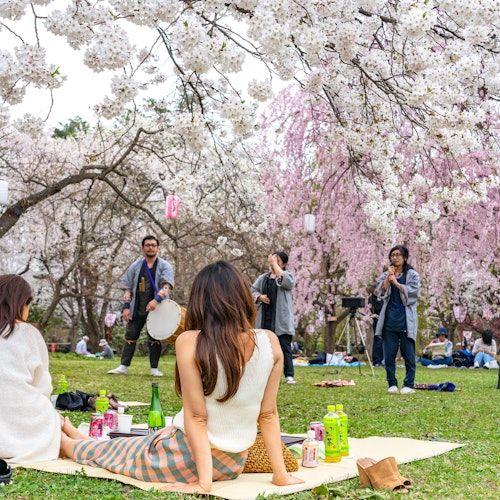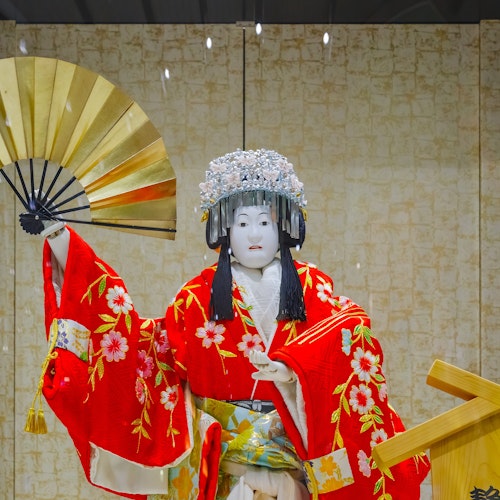
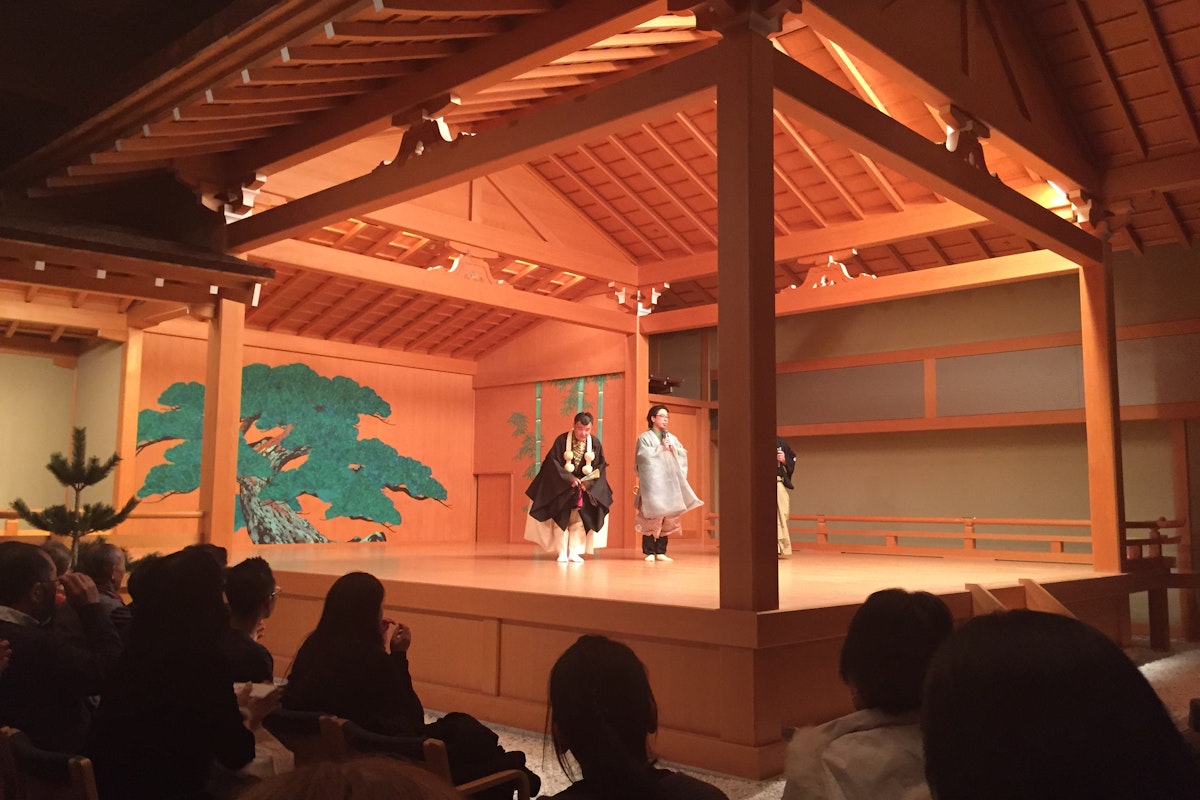
Noh Theatre, a traditional form of Japanese theater that has been performed since the Edo period, is a captivating blend of drama, music, dance, and visual artistry. As one of the oldest existing theatrical forms in the world, Noh plays weave together stories of both human and supernatural realms, creating an ethereal experience that transcends the ordinary boundaries of performance art. This unique art form, recognized as an intangible cultural property, has significantly shaped Japanese society and culture, leaving an indelible mark on its artistic landscape.
The stage of Noh Theatre, often adorned with meticulously crafted props, becomes a platform for highly trained actors to convey deep emotions through their performances. From god plays and madness plays to humorous plays, the range of Noh Theatre is expansive, offering audiences a diverse spectrum of narratives and themes. The performances are accompanied by the rhythmic beats of shoulder drums and hip drums, played by a quartet of musicians, adding a profound depth to the storytelling. With its rich history and enduring appeal, Noh Theatre continues to be a defining element of Japan's cultural heritage.
Noh Theatre has a rich history that spans several centuries. Its beginnings can be traced back to around 1,300 years ago, when a performing art known as sangaku was introduced to Japan from China. This art form gradually merged with Japanese comic theater, creating the foundation of what we now know as Noh theater.
In the 14th century, Noh evolved into a unique form under the influence of Kanami, the founder of the Yuzaki-za. Kanami adapted a form of storytelling dance called kusemai and incorporated it into Noh performances. This addition added a new layer of depth and complexity to the narratives told on the stage, marking a significant milestone in the development of Noh Theatre.
The transformation of Noh Theatre continued through the Tokugawa period (1603–1867), where it was continually refined and perfected, becoming an integral part of Japanese culture. It was during this time that Noh gained popularity and became deeply embedded in society.
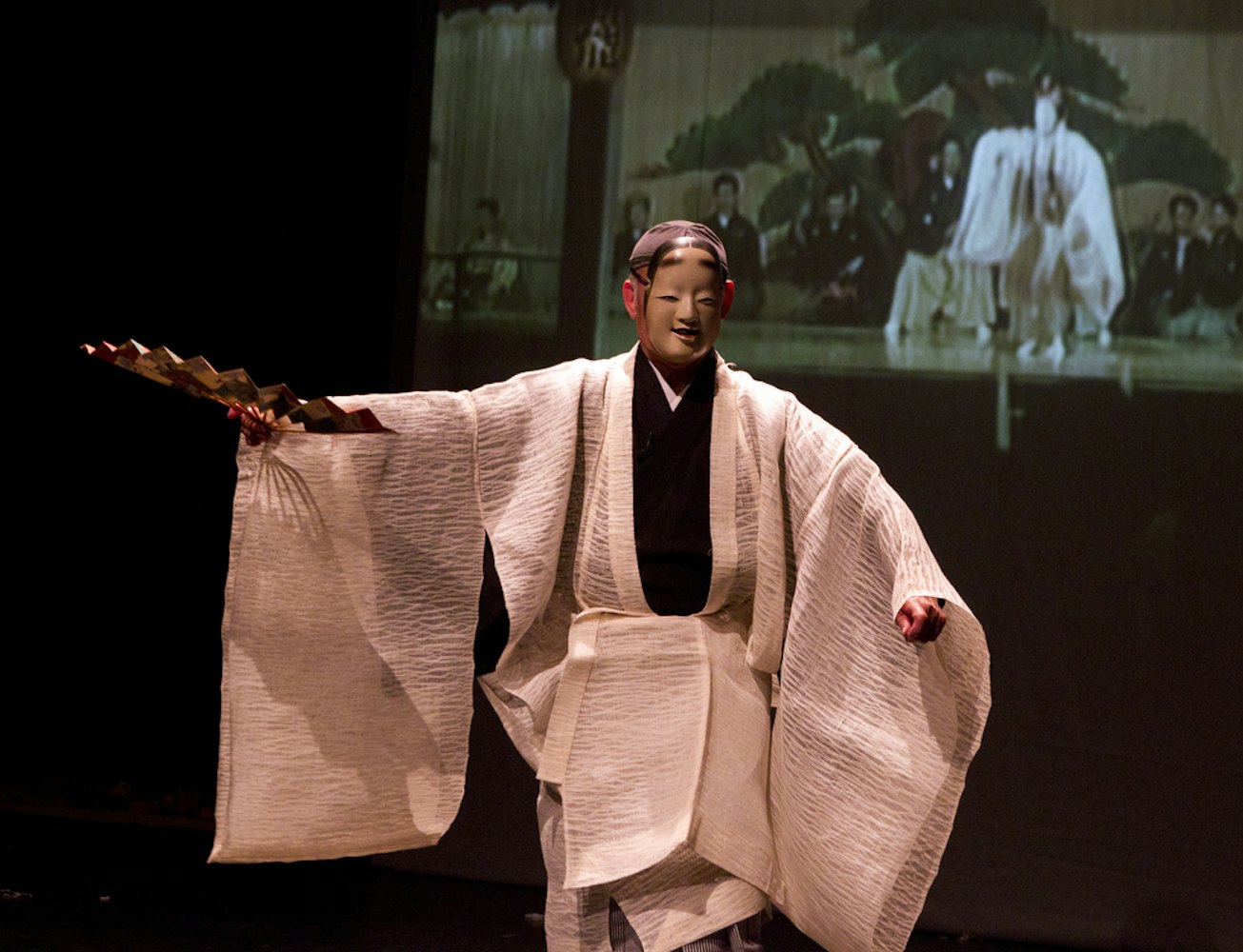
In 1983, the National Noh Theatre was established by the government. Today, it serves as a hub for Noh performances and actor training. Regular performances of Noh plays are staged here, ensuring that this traditional art form continues to thrive in the modern era. As a result, Noh Theatre has been able to maintain its relevance and appeal despite changes in societal trends and preferences over the centuries.
Noh Theatre is renowned for its exploration of both supernatural and human characters, often within the same narrative. One of the most intriguing aspects of Noh plays is their ability to seamlessly weave together the earthly and the ethereal, creating a unique dramatic texture. Warrior plays and demon plays are two common types of Noh performances, each offering a unique perspective on the human condition.
Warrior plays, or shura mono, often revolve around the spirits of deceased warriors who are unable to find peace in death due to their violent pasts. Demon plays, or kijo mono, on the other hand, typically feature supernatural beings that were once humans but transformed into demons due to intense earthly desires or grudges. These plays delve into the complexities of human emotions, using the supernatural as a metaphor for inner turmoil and conflict.
Noh actors undergo rigorous training to master the skills required for their roles. This training involves not only physical conditioning but also the study of traditional literature and Buddhist themes that are often featured in Noh plays. The actors' performances are primarily dance-based, with each movement and gesture meticulously choreographed to convey specific emotions and narratives.
The role of a Noh actor extends beyond the mere portrayal of a character. They are tasked with embodying the all-encompassing emotion that dominates the main character, whether it be jealousy, rage, or sorrow. Through their performance, they bring these emotions to life, creating an intense and immersive theatrical experience for the audience.
Masks hold a significant place in Noh performances. They are used to represent various characters, from women and elders to demons and divine beings. Each mask is intricately designed and crafted, often bearing symbolic meanings that add depth to the character's portrayal.
There are a wide variety of Noh masks, each suited to a specific type of character or emotion. For instance, masks with a slight smile are typically used for young women, while those with a more tormented expression might be used for vengeful spirits.

The masks not only help in characterisation but also serve as a medium through which the actors express their emotions. The subtle tilt or turn of a mask can dramatically alter the character's perceived emotional state, making the use of masks a vital aspect of Noh performances.
A typical Noh stage, as performed in the Kanze Noh Theater and others, is a unique spectacle of traditional Japanese design. The stage is constructed from hinoki, a type of Japanese cypress that lends an air of authenticity and tranquility to the performance space.
This square stage is open on three sides, allowing for a closer connection between the performers and the audience. At the back of the stage is the kagami-ita, a back panel often displaying a painted pine tree, contributing to the stage's serene ambiance.
The stage design also incorporates a single entrance and exit for the actors, designated by a multicolored curtain on the back-right side. This singular point of entry and exit heightens the drama, focusing the audience's attention on the performers' entrances and exits. The roof of the stage is supported at its four corners by pillars, further adding to the stage's distinctive aesthetic.
Music plays an integral role in Noh performances, helping to convey emotions, set the atmosphere, and enhance the storytelling. A typical Noh play is accompanied by a group of four musicians, known as the "hayashi," who sit at the back of the stage.
They use a combination of instruments, including drums and flutes, to create a distinctive musical score that complements the drama unfolding on stage. The music in Noh theater can range from somber and haunting to lively and energetic, reflecting the emotional journey of the characters and the narrative arc of the play.
The rhythm and melody of the music are closely intertwined with the movements of the actors and the pace of the performance. Subtle changes in the musical score can signal shifts in the narrative or the emotional state of the characters. In this way, music serves as an essential tool for enhancing the audience's understanding and appreciation of the Noh drama.
The instruments used in Noh performances include the shoulder drum (kotsuzumi), hip drum (ōtsuzumi), stick drum (taiko), and flute (nōkan). Each instrument contributes to the unique soundscape of Noh theater. The drums, played by professional actors, provide a rhythmic backbone to the performance, while the haunting tones of the flute add a layer of melancholy and mystique.
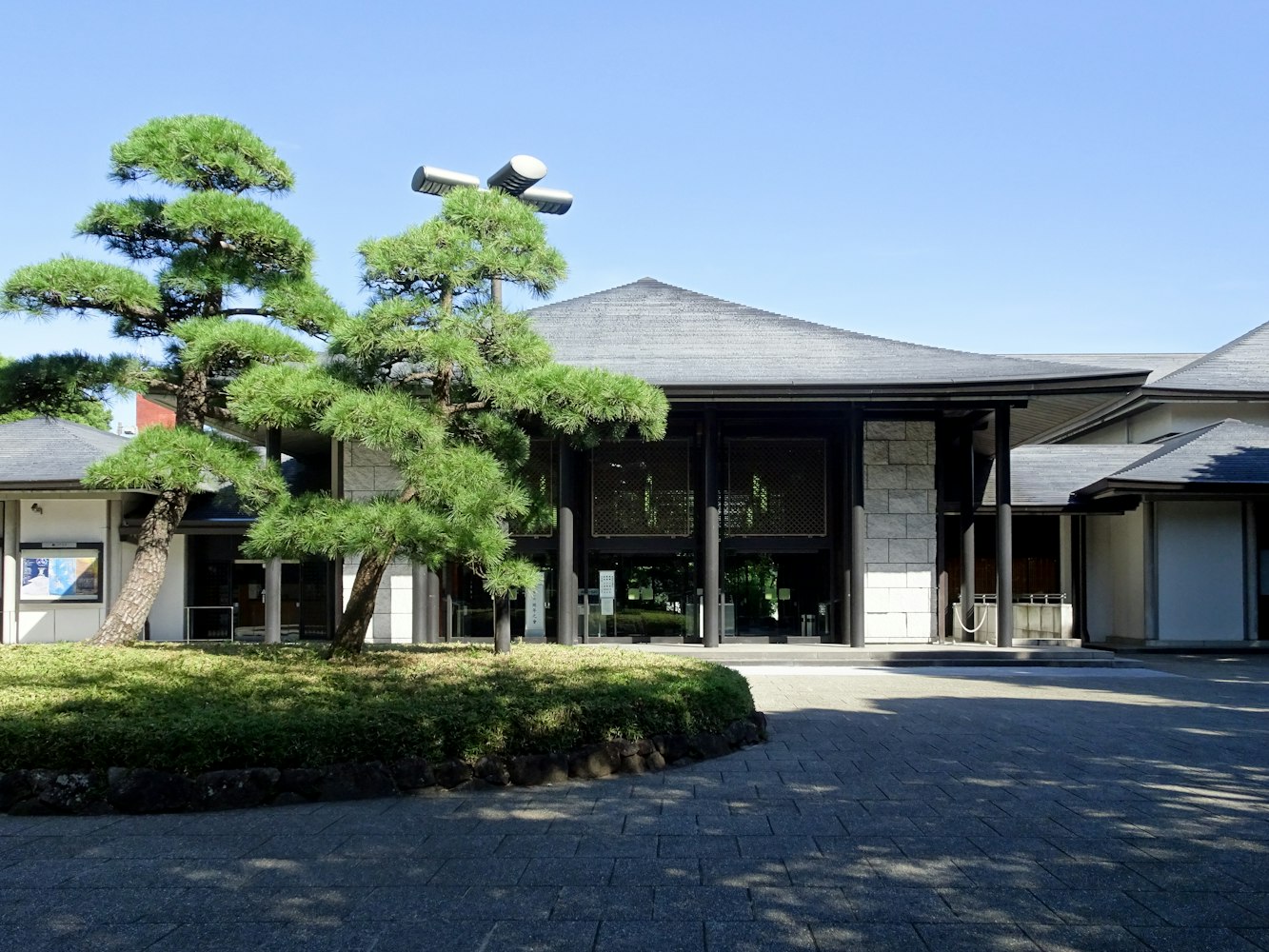
The kotsuzumi and ōtsuzumi are particularly important in conveying the emotional intensity of the play. The tension of the drumheads can be adjusted by the player during the performance to produce a wide range of pitches, mirroring the emotional highs and lows of the narrative. The taiko, used less frequently, is typically reserved for plays involving gods or supernatural beings, adding an element of power and grandeur to these performances.
Costumes in Noh theater are elaborate and symbolic, contributing significantly to the visual spectacle of the performance. The costumes often reflect the character's role, status, and emotional state, providing visual cues for the audience. For example, a leading character might wear a brightly colored robe with intricate patterns, while a secondary character might wear simpler attire.
Noh costumes can also indicate the nature of the play. In Genzai Noh, which features human characters, the costumes are typically more realistic, whereas in Mugen Noh, which involves supernatural worlds, the costumes can be more fantastical. The costumes are carefully selected and meticulously crafted, often featuring traditional Japanese motifs and designs.
Costumes play a crucial role in the storytelling process in Noh theater. They not only help to define the characters but also provide visual symbolism that enhances the narrative. For instance, a mask worn by a main actor can reveal their character's identity or emotional state, while a robe with a specific pattern might signify a character's social status or profession.
Costumes can also reflect the themes and mood of the play. Brightly colored costumes might be used in plays with a celebratory or festive theme, while darker colors might be used in plays with a more somber or tragic tone. Through their visual impact and symbolic significance, costumes in Noh theater add depth to the characters and richness to the narrative, enhancing the overall aesthetic and emotional experience for the audience.
Noh theater encompasses a diverse range of plays, each with its own unique themes, characters, and narrative structure. These include:
Genzai Noh: Also known as 'present Noh', these plays typically feature human characters and contemporary events. They offer a realistic reflection of human experiences and societal issues.
Mugen Noh: Translated as 'dream Noh', these plays delve into supernatural worlds and often feature ghosts or spirits as the main characters. They explore themes of the afterlife, karma, and spiritual redemption.
Kami mono: Literally 'god plays', these performances often involve deities descending to the human world. They are usually performed first in a day-long series of Noh plays.
Shura mono: Translated as 'warrior plays', these dramas often depict famous warriors from history or literature, focusing on their bravery, sacrifices, or tragic deaths.
Onna mono: Meaning 'women plays', these plays often depict female protagonists, exploring their emotions, stories, and societal roles.
Noh theater continues to hold a significant place in contemporary Japanese society. It is widely recognized for its artistic and cultural value, with professional actors and accomplished practitioners dedicated to preserving and promoting this traditional art form. Noh performances are regularly held at theaters across Japan, attracting audiences with their unique blend of drama, music, and dance.
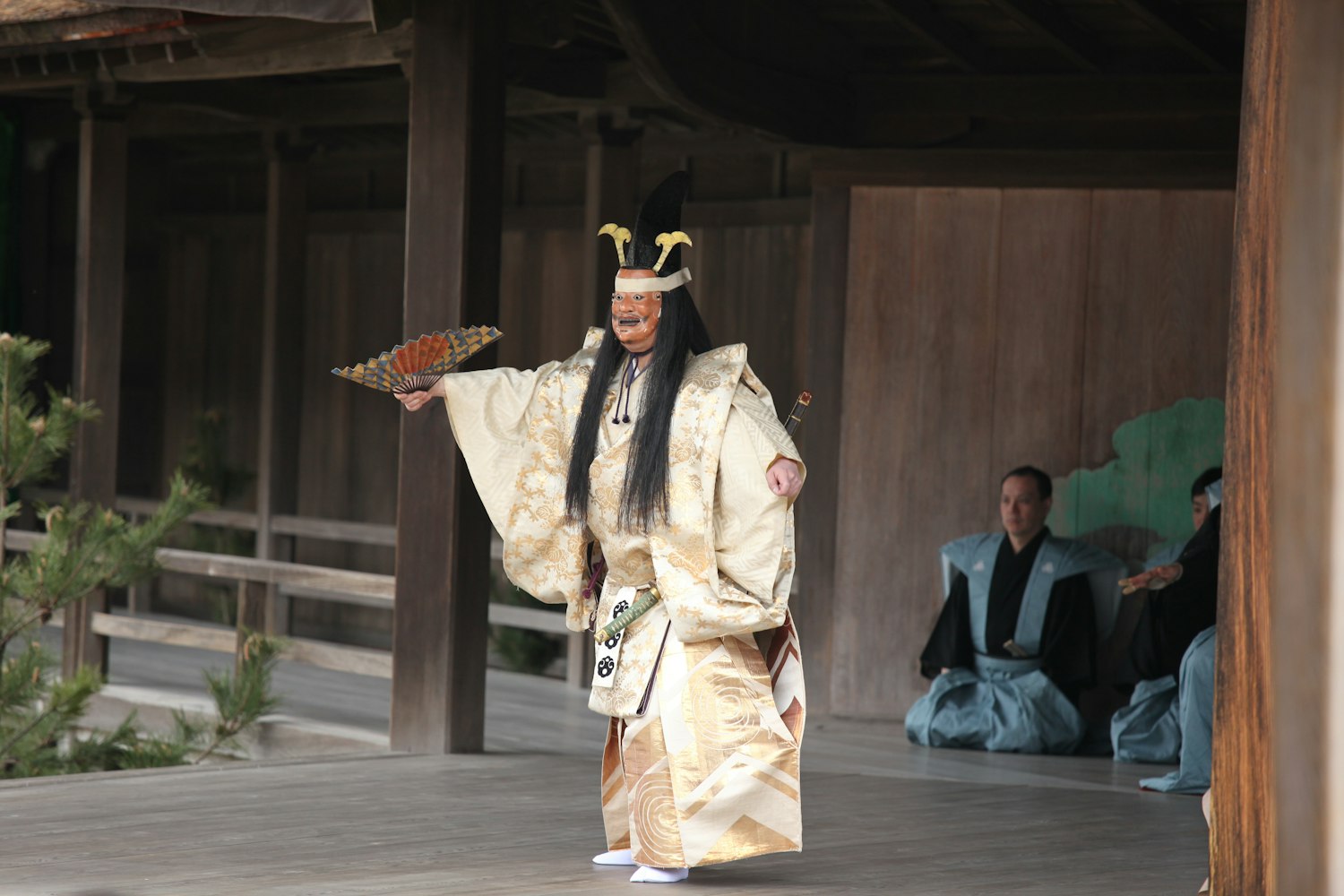
In recent years, there has been a renewed interest in Noh theater among younger generations, with initiatives aimed at making Noh more accessible and appealing to a broader audience. Educational programs have been established to train actors in the traditional techniques of Noh, while modern interpretations of Noh plays are being created to resonate with contemporary themes and issues.
Noh theater has been recognized by the Japanese government and the Japan Arts Council for its significant contribution to Japanese culture. In 2001, it was designated by UNESCO as an Intangible Cultural Heritage, highlighting its importance as a traditional art form that embodies the cultural and artistic traditions of Japan.
This recognition has helped to raise the profile of Noh theater both in Japan and internationally, contributing to efforts to preserve and promote this unique form of theatrical expression. Despite the challenges posed by modernization and changing societal tastes, Noh theater continues to thrive, a testament to its enduring appeal and the ongoing efforts of those dedicated to its preservation.
Noh theater, an enduring symbol of Japan's rich cultural heritage, offers a fascinating journey into the heart of Japanese culture. Its compelling blend of dance, music, and drama creates a theatrical experience that captivates audiences and leaves them longing for more. Whether you're drawn to the emotional depth of Genzai Noh or the supernatural elements of Mugen Noh, Noh performances promise an immersive experience that transcends the ordinary.
If this has sparked your interest in Noh theater, consider booking a Noh theater tour with TripToJapan. We offer curated tours that bring you face-to-face with this extraordinary art form. Visit our website at TripToJapan to learn more and reserve your spot today. Let the magic of Noh Theatre be the highlight of your Japanese adventure!
